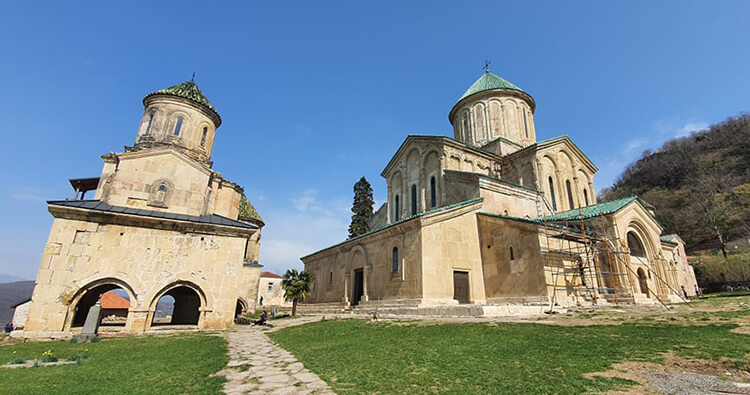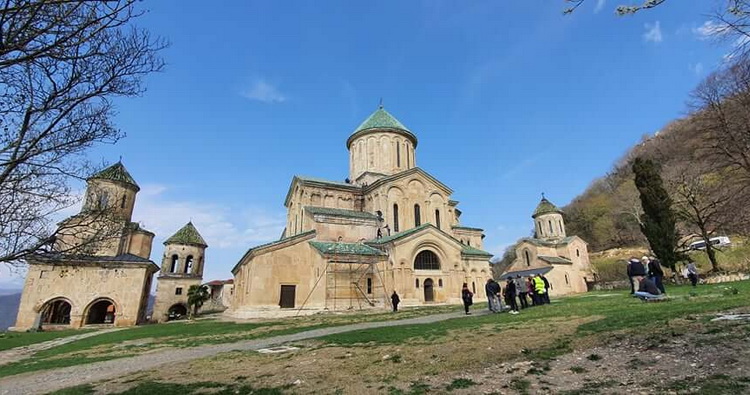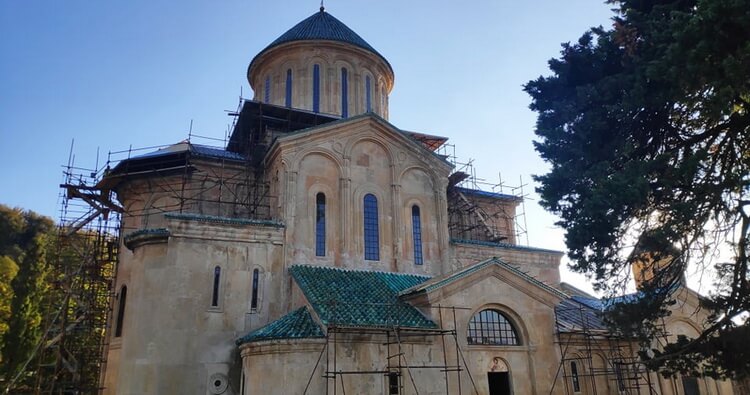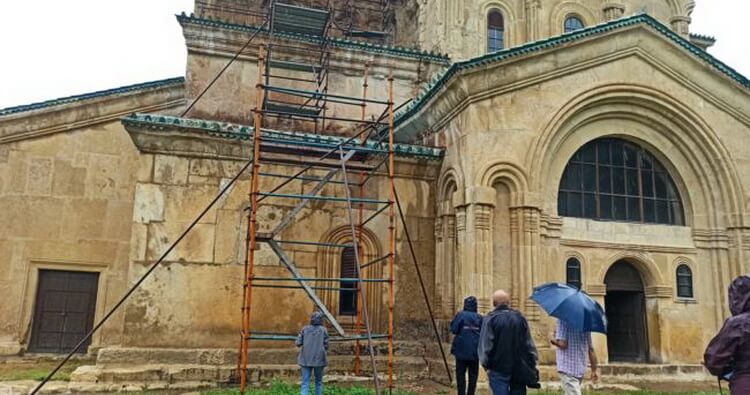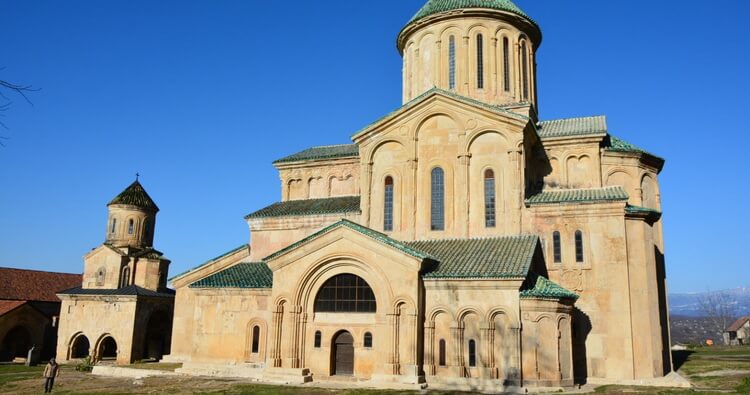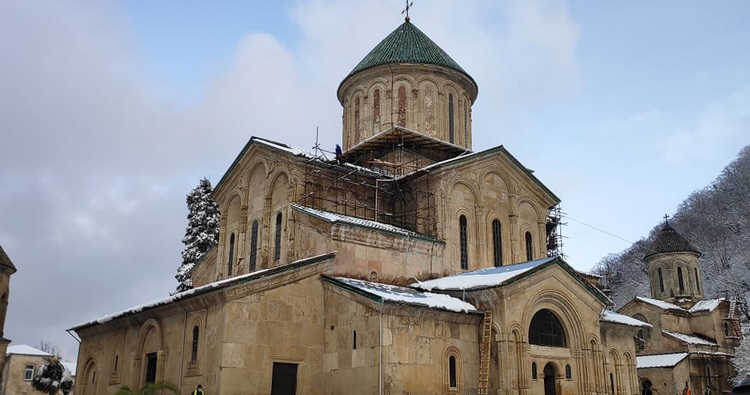Cultural heritage body fines, replaces contractors working on Gelati UNESCO monument rehabilitation
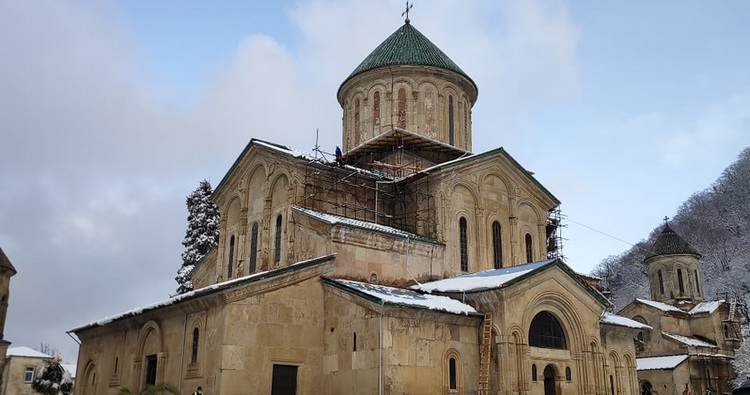
Snowfall on the location of Gelati on Monday coincided with damage on a temporary construction built over the leaking roof tiling. Photo via National Agency for Cultural Heritage Preservation.
The National Agency for Cultural Heritage Preservation has fined and replaced the company working on the ongoing rehabilitation of the Gelati Monastery Complex, a UNESCO World Heritage Site in the country's west, for failing to fix deficiencies in the work.
Releasing an update on developments around the monument since July - when rainwater leaks linked to damage to the complex's newly installed roofing were reported from the site - the state body said a new company would take over the rehabilitation works starting Tuesday.
The agency said the Georgian Arts & Culture Centre and Ikorta 2007 - two contractors working on the most recent stage of works on Gelati - would be fined 12,000 GEL ($3,600/€3,000) each for "failure to amend results of work carried out in violation of terms, despite warnings issued last year".
The update revealed wind had blown off a section of a temporary structure - built by the contractors over the roof of the monument to safeguard it from adverse weather - on Monday. Work on fixing the damage was started the same evening, the national body for cultural heritage added.
The most recent damage coincided with snowfall on the site on Monday. Agency director Nika Antidze made social media updates on the ongoing work from the location, saying he was personally directing the efforts and calling reports on collapse of the temporary roofing "disinformation".
Replacing the two companies for the next stages of work on Gelati, the state agency picked Bagineti+ as the new contractor for the rehabilitation, and said a group of experts from the state organisation would continuously monitor the work.
The development follows a request by Ana Natsvlishvili, one of the leaders of the Lelo opposition party, to the prosecutor's office on Monday to launch an investigation into possible "wrongful rehabilitation" process of the UNESCO-listed monument by state cultural organisations.
Damage to the recently installed roofing of Gelati was reported in July, when rainwater leaked into the monastery complex through the roof tiling of the St Mary Temple, the principal part of the site.
In their comments the Georgian Arts & Culture Centre said the damage to tiling had been "impossible to predict" as none of the tiles later revealed to have failed had shown signs of visual defects during inspection after they were produced, and had undergone laboratory testing on "mechanical characteristics" before being used in the rehabilitation works.
 Tweet
Tweet  Share
Share

